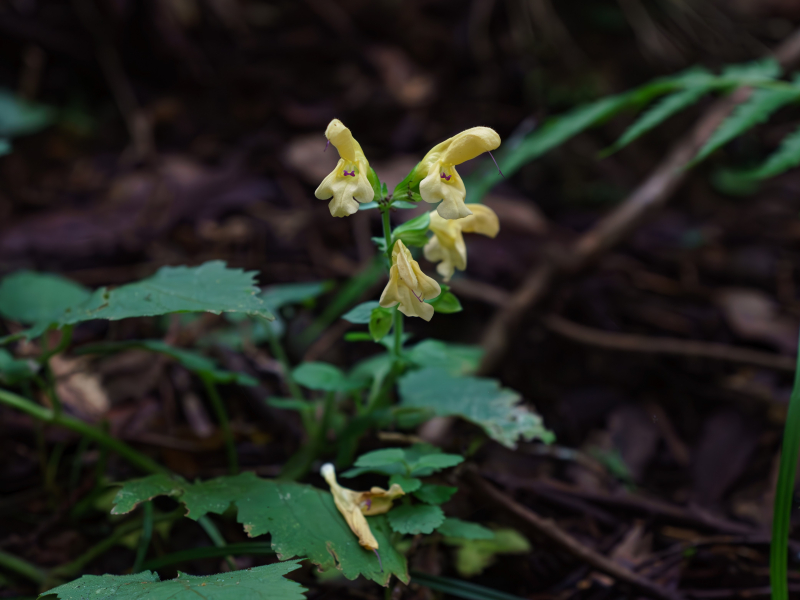フィールド日記
2025.10.31
テイショウソウ

2025.10.28
ミズヒキ

2025.10.24
キバナアキギリ

2025.10.21
ヤブマメ

2025.10.17
ヒメクグ

2025.10.14
ネズミノオ
ネズミノオが咲いています。道端などに見られるイネ科の多年草です。和名は、細長い花序が、ネズミの尾に見えることに由来します。

2025.10.10
エノキグサ
エノキグサが咲いています。道端などに普通に生えるトウダイグサ科の一年草です。和名は、葉がエノキという木の葉に似ていることに由来します。

2025.10.07
ウド
ウドが咲いています。山地の林縁などに見られるウコギ科の多年草です。若芽を食用とし、畑で栽培されることもあります。

2025.10.03
ローゼル
ローゼルが咲いています。ハイビスカスティーの原料として使われるアオイ科の多年草です(日本では冬を越せないため一年草扱い)。裾野市の生産者から苗を分けていただき、生徒たちが育てています。ハイビスカスティーには花びらではなく、花の後に肥大したがくを利用します。


Roselle plants are in bloom. They are perennial plants in the Malvaceae family that are used to make hibiscus tea (In Japan, they are considered as annual plants because they can't survive the winter.). Our students received the seedlings from a farmer in Susono and have been cultivating them. After flowering, they use the harvested sepals, not the petals, to make hibiscus tea.
2025.09.30
バタフライピー
バタフライピーが咲いています。東南アジアなどが原産の青いハーブです。裾野市の生産者の方に種を譲っていただき、生徒たちが栽培しています。11月頃まで花が収穫できるそうです。


















